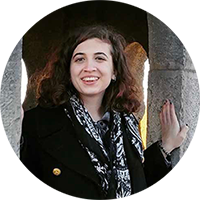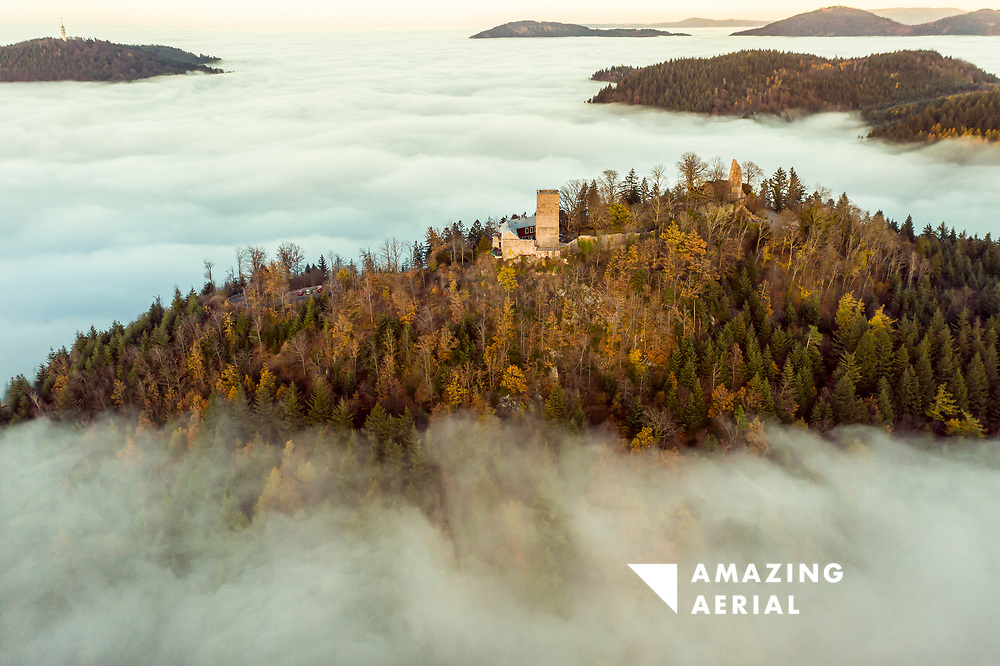Flying Over the Drone Industry's Gender Gap
Drone photography is a male-dominated industry, but many women are making a name for themselves in what some people think is a boy’s club. We caught up with some of Amazing Aerial’s female members to talk about their experiences.
Sep 18, 2023

Photographer Sandrine Hecq flies her drone on the beach at Nusa Perida, Bali, Indonesia. Sandrine is one of Amazing Aerial's newest members. © Amazing Aerial Agency / Sandrine Hecq
 By Rebecca Duras
By Rebecca Duras
Photography is a male-dominated field, and the gender gap is even worse when you look at drone photography alone. According to a statistic published by the collective Women Who Drone, fewer than 6% of licensed drone pilots in the United States are women, although more and more women are becoming pilots.
Being a woman in the drone industry comes with beautiful moments but also some headaches. We spoke to some of Amazing Aerial’s female members, Sandrine Hecq, Joanna Steidle, Julia Pertek, and Sabine Gerold, about their experiences as women in drone photography.
Sparking A Passion for Droning

Clouds gather over Riviere du Rempart, Black River, Mauritius. Sabine Gerold found her passion for drone photography while traveling in the Maldives and is now seeking new adventures while living in Mauritius. © Amazing Aerial Agency / Sabine Gerold
The women we spoke to all have different stories about how they came to droning. Sandrine Hecq was working in an affiliate marketing business that used drones for some of its shots. Although her husband was the one who started flying the drone at first, Sandrine quickly took over the joystick. “I was telling him what I wanted in the shot and our visions were clashing so I just grabbed the remote from him and since then, I never let go,” she says.
Julia Pertek also started flying drones while in a relationship with another photographer who was using them. “After a year of observing other people flying drones, I thought it doesn’t seem that difficult, I can do that too,” she explains.
Sabine Gerold was motivated by another love—her love for traveling and for the Maldives. However, her first Mavic 2 Pro did not last very long. “I practiced one or two flights and thought it was so easy, then I went on an island, started it, and immediately lost connection,” she explains, “So that is the story of my first drone, I dedicated it to the sea.”
Luckily, Sabine is not the type of person that gives up easily. “My mom said, ‘Sabine, now you have tried it, it’s not for women, you won’t get another drone,’ but I had already gotten a second one because somehow this droning thing had me on the hook.” Now, Sabine shares that her mother is proud whenever she shares her clips with her.
Some of our other droners reported that they felt hesitant to try because of the perception that drones are for men. Sandrine was hesitant to take over from her husband at first due to this reason. “The people that were flying drones back then were just men, we didn’t know any women who were flying drones,” Sandrine says, explaining why her husband was the first to start flying in their family, “Obviously now it’s a completely different mindset and story.”
For others, there was no hesitation at all. Joanna Steidle, who came to drones because of her lifelong love of flying, explains, “it’s a way to do things that are thrill-seeking without putting yourself at physical risk.”
Is Droning a Boy’s Club?

Hammerhead sharks swim freely in the open water. Capturing underwater photos such as this one with a drone requires great skill to navigate waves, refractions, and other factors that can distort the photo. Sandrine’s years of practice with a drone equipped her with the skills to take photos such as this one. © Amazing Aerial Agency / Sandrine Hecq
Due to the heavy gender imbalance in the droning industry, often female pilots will go to industry events and be the only woman present.
Joanna mentions that she is often the only woman in droning spaces, but doesn’t believe she experienced many negative professional consequences due to her gender. “In my area I was one of the first pilots and I’m the only real full-time specialist,” the droner explains. She did join associations such as Women Who Drone and Women And Drones to connect with other women in the industry, and was even named one of the Women to Watch for Women And Drones.
Other women report more negative experiences. Sandrine says, “I’ve had a lot of negative experiences with very rude messages on Instagram, a lot of men critiquing my work or pointing out opportunities I’ve had that they thought I wasn’t good enough for.” However, the situation has gotten better over the past few years as more female photographers started using drones.

White sharks swim near a shoal of fish, creating contrasts with the open water of Australia. © Amazing Aerial Agency / Joanna Steidle
In other drone-related industries, the gender gap can be even worse. Valentina Russo, a civil engineer and drone pilot, is one of the few female drone pilots in Italy and one of the country’s top photogrammetry experts. Both engineering and droning are male-dominated industries, but Valentina doesn’t let that phase her. She says, “I have found myself in front of people with doubts and prejudices, or even worse, those who have made fun of me. I have always worked without paying attention to what others think; the quality of work is objective and independent of any gender-related considerations.”
Julia reports mostly positive experiences in droning, although sometimes men approach her when she’s flying and double-check if she knows what she’s doing. “I believe that if we try to just make people a little bit more aware that this is a great profession to do and women can do it just as well as men then maybe we can grab the attention of more young women to actually start learning how to do it,” she explains, reflecting on the gender gap.
Other women don’t think about the gender gap at all. Sabine explains that she is more interested in thinking about the adventures she can have with her drone than in the gender gap. “It is more in the heads of the male I think to associate droning with men, but of course I don’t think that way,” she elaborates.
Finding Community with Other Droners

A geothermal steam pot sends erupts, the billowing white steam contrasting with the red and yellow soil around it on the Reykjanes Peninsula, Iceland. © Amazing Aerial Agency / Julia Pertek
For the female droners in the Amazing Aerial community, finding camaraderie with others is very important. Julia goes flying with two other female pilots based in Iceland. “We would sometimes go on drone trips together just to have a safe space where we can all practice together because I noticed other women had the same issue as me, they lacked confidence and didn’t want to jeopardize their equipment,” she says.
Social media is often an important tool for female droners to find each other. Julia found her fellow pilots through Instagram. Joanna also mentions the importance of social media when talking about her community. “Facebook is the best place to find connections, you can find meet-up groups and people who are local to you…I would suggest joining Women and Drones and Women Who Drone on Facebook.” Joanna also mentors other female pilots that are local to her, usually women that find her through her social media profiles.
The droning community also has several organizations dedicated to helping female pilots find a supportive community. Joanna is a brand ambassador for Women Who Drone and a member of Women and Drones and has high praise for both. “Women and Drones is really an amazing organization in terms of connecting people to all different platforms in the drone and aviation community…they celebrate women and they brought in a lot of great connections for me,” she explains.
Sandrine is also a Women Who Drone ambassador. “In the beginning it was more of a community and I just felt like I could be understood,” she explains, noting that Women Who Drone has changed over the years that she’s been an ambassador, adding new opportunities such as editing tutorials and selling stock footage.
For Sabine, there is no need to seek out a community of only female droners as she feels very supported within the larger drone community itself. “Droners support each other and you can have questions…we have the same passion, we live in it, we are addicted.”
The drone pilots cited Amazing Aerial as an example of a supportive community. “I’ve learned more in the past month and a half than I have in five years,” Sandrine says.
Joanna has advice for agencies like this one looking to bridge the gender gap. “As you pick one up here and there, help support them to bring in other female pilots,” she says, mentioning how important it is to build those connections.
Flying Towards the Future

Fresh lava flows out of a volcanic eruption in Geldingadalur, Iceland. Julia Pertek is based in Iceland and uses her drone to capture the stunning landscapes. © Amazing Aerial Agency / Julia Pertek
Reflecting on the position of female drone pilots, Sandrine says, “I feel like if you’re a woman in the droning industry, never be fearful, never have a stigma around how you should drone, how you should edit, how you should be. I think it’s just about finding your own style, which is really important, and to just keep on learning no matter what anyone has to say about gender.”
The women were united in their feeling that what is important is to follow your passions, not let other people dictate what you can and cannot do. Sabine had an important message for anyone hesitating to try something new: “it’s never too late to give your life a new direction, even if you are 60 years old like I am. You can always start from scratch and as a good friend of mine said to me, you just need 20 seconds of bravery.”
As the drone industry develops and moves forward with better technology, hopefully it will also develop with regards to the gender gap. Until then, female drone pilots will continue cruising above gender stereotypes and letting their work show that drone photography truly is for everyone.
Stay updated when we post new articles.
We hate SPAM. We will never sell your information, for any reason.








